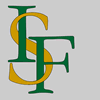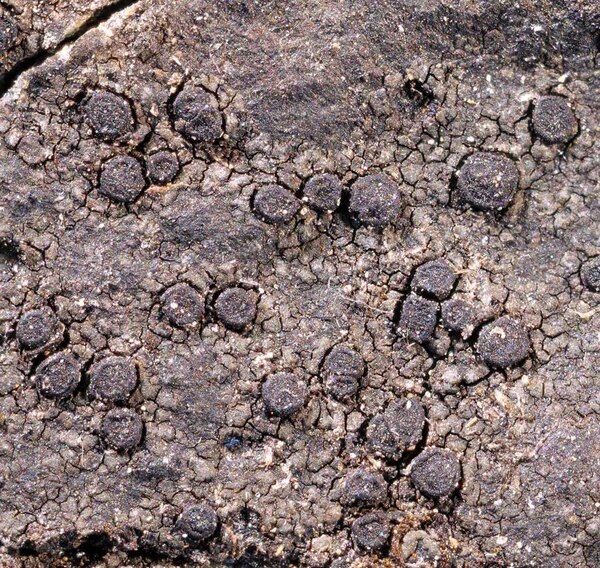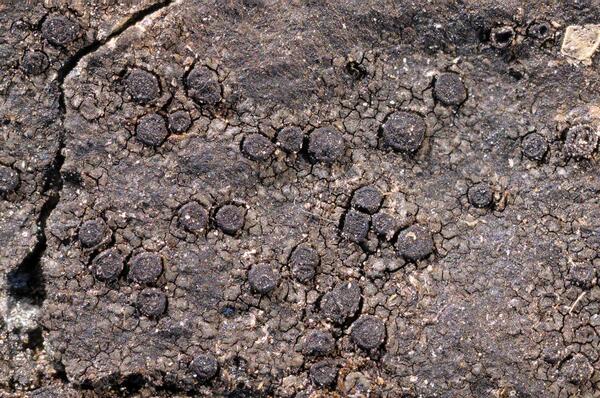Rhizocarpon sublavatum Fryday
Lichenologist, 32: 214, 2000.
Synonyms:
Distribution:
Description: Thallus crustose, episubstratic, rimose-areolate, grey-brown, forming 1-2 cm wide patches which are sometimes confluent, covering larger areas, usually delimited by a black prothallus. Areoles mostly flat, contiguous, 0.2-0.3(0.4) mm wide, more than 12 per square cm. Medulla white, I-. Apothecia lecideine, black, epruinose, (0.2-)0.3-0.6(-0.7) mm across, at first innate, then sessile, with a mostly flat disc and a thin proper margin. Proper exciple dark brown in outer part, paler within, of radiating hyphae, K-, sometimes with a green pigment reacting N+ red in upper part; epithecium olive-green to olive-brown, K- or K+ blue-green intensifying; hymenium colourless, (75-)100-140(-160) μm high, I+ blue, paraphysoids sparingly branched and anastomosing, c. 2 μm thick at mid level, the apical cells up to 3 μm wide, without a strongly delimited pigmented cap; hypothecium medium to dark brown. Asci 8-spored, clavate, fissitunicate, with a well-developed tholus that is K/I- in lower part and K/I+ blue near the apex, lacking an ocular chamber, Rhizocarpon-type. Ascospores muriform, with 11-41 cells visible in optical view, hyaline, sometimes pigmented when overmature, narrowly ellipsoid to ellipsoid, (17-)25-40(-45) x (11-)14-20(-25) μm, halonate. Photobiont chlorococcoid. Spot tests: cortex and medulla K-, C-, KC-, P-. Chemistry: without lichen substances. Note: a species resembling Rh. reductum in the small apothecia and the eumuriform ascospores, but thallus with flat areoles, lacking lichen substances; on damp siliceous rocks, often along streams, occasionally together with Rehmia lavata, which differs in the larger areoles and apothecia, and in preliminary molecular data (see Möller & al. 2025); widespread in Europe, from the boreal to the nemoral-alpine zones, with a single record from the Eastern Alps (Austria), but the species was not recognised in earlier times, and might be present also in the Italian Alps.
Growth form: Crustose
Substrata: rocks
Photobiont: green algae other than Trentepohlia
Reproductive strategy: mainly sexual

Predictive model
Herbarium samples
Growth form: Crustose
Substrata: rocks
Photobiont: green algae other than Trentepohlia
Reproductive strategy: mainly sexual

Predictive model
| Herbarium samples |
 INDEX FUNGORUM
INDEX FUNGORUM
 GBIF
GBIF



